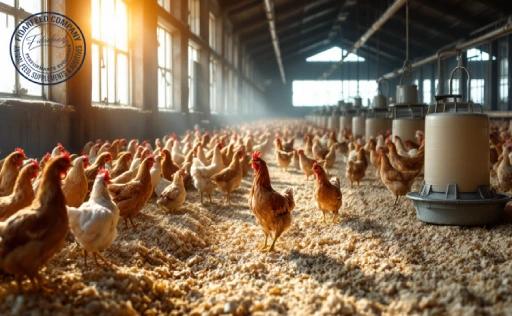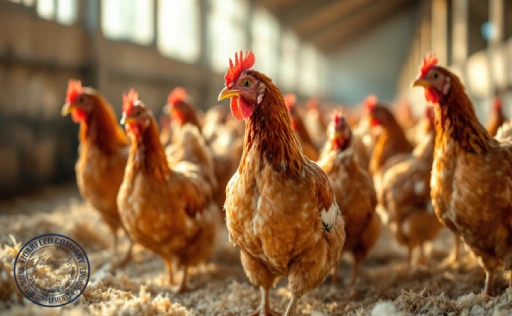Aquatic Life with Probiotics is no longer just a trend; it’s a game-changer in aquaculture and aquatic feed industries. Whether you’re a seasoned breeder or just starting, ensuring the health of your fish and maintaining water quality is a top priority. Probiotics have emerged as a natural, effective solution to promote a thriving aquatic environment. But how do they work, and why should you consider integrating them into your system? Let’s dive in.
Why Probiotics Matter for Aquatic Life
In any aquatic ecosystem, balance is crucial. Poor water conditions, stress, and disease outbreaks can significantly affect fish health, leading to economic losses for breeders and aquaculture professionals. Probiotics, which are beneficial bacteria, play a critical role in maintaining this balance. They help by improving digestion, enhancing immunity, and fostering a healthier environment, reducing the dependency on antibiotics and chemical treatments.
Learn more about: Probiotic Supplement for Aquatic Animal
Scientific studies have shown that probiotics boost growth rates, improve survival chances, and even enhance nutrient absorption. By adding probiotics to fish feed or directly into the water, breeders can create a sustainable, disease-resistant aquatic environment.
How Probiotics Improve Water Quality
Water quality is a major concern for anyone working with aquatic life. Excess waste, ammonia buildup, and harmful pathogens can disrupt the delicate ecosystem, leading to stressed and unhealthy fish. Probiotics help by breaking down organic matter, reducing ammonia and nitrate levels, and outcompeting harmful bacteria.
Learn more about: Can Probiotics Really Boost Fish Growth in Aquaculture?
For example, probiotic strains like Bacillus subtilis and Lactobacillus are known to decompose organic waste efficiently. This not only keeps water clear but also minimizes foul odors and algae overgrowth, making aquaculture management easier and more cost-effective.
Boosting Fish Health with Probiotics
Fish, like humans, have gut microbiomes that influence their overall health. A healthy gut leads to better digestion, faster growth, and improved disease resistance. Probiotics enhance gut flora by increasing beneficial bacteria and reducing harmful pathogens like Aeromonas and Vibrio, which cause deadly infections.
Learn more about: Everything You Need to Know About Wholesale Feed Additives
Moreover, probiotics have been found to stimulate the immune systems of aquatic animals, making them more resilient against stress and environmental fluctuations. Breeders using probiotic-enriched diets have reported lower mortality rates and stronger, more active fish.
Choosing the Right Probiotics for Your Aquatic System
Not all probiotics are created equal. Choosing the right strains depends on the type of aquatic species you breed and your system’s specific needs. Some of the most effective probiotic strains include:
Learn more about: Get the Best Value: Ready-Made Feed for Livestock, Poultry & Aquaculture
- Bacillus subtilis – Improves digestion and breaks down organic waste.
- Lactobacillus species – Enhances gut health and disease resistance.
- Nitrosomonas and Nitrobacter – Help regulate ammonia and nitrate levels in water.
When selecting probiotics, look for high-quality, research-backed formulations. Probiotic supplements should be viable, stable, and tailored to either freshwater or marine environments.
How to Use Probiotics for Maximum Benefits
To get the best results from probiotics, proper application is key. They can be administered in two main ways:
- Through Feed – Many probiotic supplements are designed to be mixed with fish feed. This ensures direct gut colonization, enhancing digestion and immunity.
- Direct Water Application – Adding probiotics directly to water helps control harmful bacteria, improve water quality, and maintain ecosystem balance.
Learn more about: How Are Farmed Fish Fed? Understanding Aquaculture Feeding Practices
Consistency is essential. Probiotics work best when used regularly, and dosage should be adjusted based on fish population, water conditions, and feed composition.
Common Myths About Probiotics in Aquaculture
Despite their proven benefits, several myths about probiotics persist in the aquaculture industry:
- “Probiotics replace the need for water changes.” While probiotics improve water quality, regular maintenance is still necessary for a healthy environment.
- “All probiotics work the same way.” Different strains have different functions; choosing the right type is crucial.
- “Probiotics act instantly.” Unlike chemical treatments, probiotics take time to establish a beneficial microbial balance. Patience is key.
Learn more about: Aquaculture Water & Soil Probiotic
Probiotics vs. Traditional Water Treatments: Which is Better?
Traditionally, aquaculture relied on antibiotics and chemical treatments to control disease and maintain water quality. However, these methods often have drawbacks, such as antibiotic resistance, chemical residues, and environmental harm.
Learn more about: Reducing Fish Mortality in Aquaculture with Probiotics
Probiotics, on the other hand, offer a natural, sustainable alternative. They do not leave harmful residues, promote long-term ecological balance, and enhance fish health holistically. While chemical treatments may provide quick fixes, probiotics offer lasting benefits with fewer risks.
Final Thoughts: A Healthier Future for Your Aquatic Life
The integration of probiotics into aquaculture and aquatic feed systems represents a significant step forward in sustainable fish farming. By improving water quality, enhancing fish health, and reducing dependency on harmful chemicals, probiotics create a more balanced and productive aquatic environment.
Whether you’re a large-scale breeder or simply managing a home aquarium, investing in probiotics can yield remarkable results. Have you used probiotics in your aquatic system? Share your experiences, ask questions, or leave a comment below; we’d love to hear from you!








